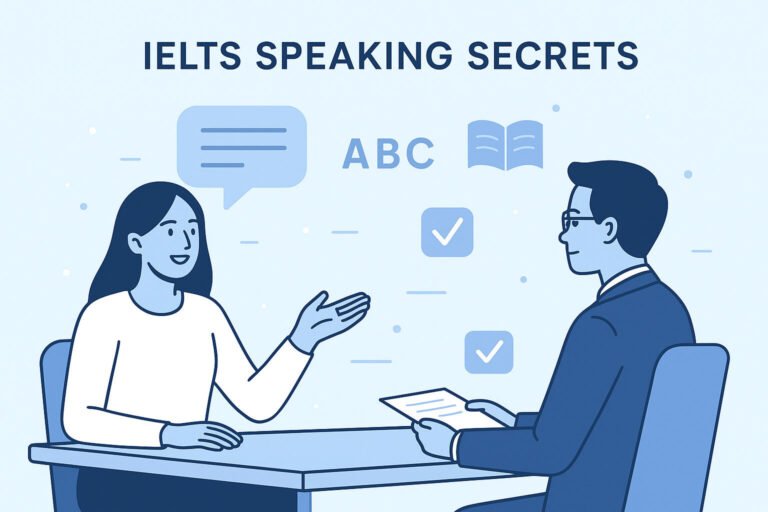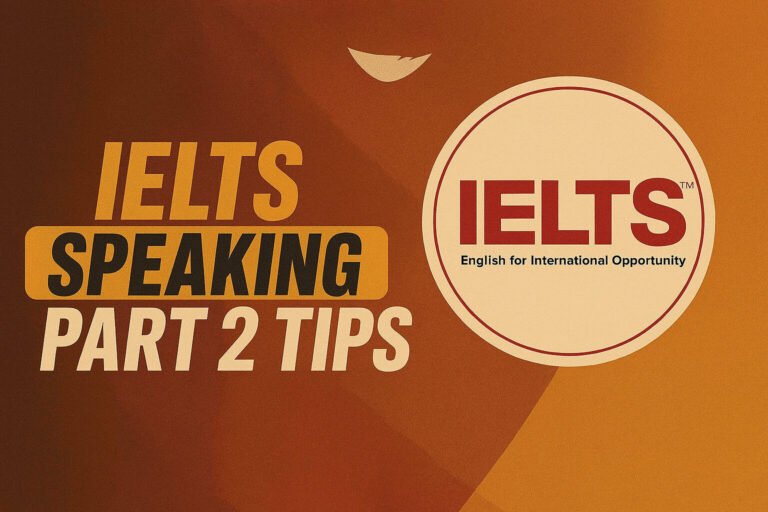Are you preparing for the IELTS exam and feeling nervous about the IELTS Speaking Part 1 tips? You’re not alone! This section, which lasts about 4-5 minutes, involves answering simple questions about yourself, your daily life, hobbies, and familiar topics. Drawing from detailed notes from an IELTS speaking class, this guide breaks down the key Do’s and Don’ts for IELTS Speaking Part 1, along with useful idioms to boost your IELTS score. Whether you’re aiming for a band 7 or higher, these tips will help you speak confidently and naturally.
By incorporating these strategies, you’ll improve fluency, vocabulary, and pronunciation—core criteria for IELTS evaluators. Let’s dive in!
What is IELTS Speaking Part 1 Tips? A Quick Overview
Before we get into the specifics, remember that Part 1 is an introduction to the speaking test. The examiner asks 10-12 questions on 3-4 topics, like home, work, studies, or travel. Your goal? Provide clear, extended responses that showcase your English skills. Now, let’s explore the Do’s for IELTS Speaking Part 1 tips to set you on the right path.
Do’s for IELTS Speaking Part 1: Best Practices to Shine
Following these do’s will help you make a strong first impression and demonstrate your language proficiency. Based on class notes, here are the top recommendations:
- Be natural and conversational: Speak as if you’re chatting with a friend. Use contractions (e.g., “I’m” instead of “I am”) to sound more fluent and relaxed.
- Expand your answers: Avoid short replies. For example, if asked about your hometown, don’t just say “It’s nice.” Elaborate: “My hometown is a bustling city with lots of parks, which makes it a great place to relax after work.”
- Use varied vocabulary and grammar: Mix simple and complex sentences. Incorporate topic-specific words, like “urban sprawl” when discussing cities, to impress the examiner.
- Listen actively and answer directly: Pay close attention to the question. If it’s about hobbies, link your response back to why you enjoy them, showing coherence.
- Practice pronunciation and intonation: Speak clearly with natural rhythm. Rising intonation for questions and emphasis on key words can elevate your score.
- Add personal examples: Make your answers relatable by sharing brief stories or opinions, which helps with fluency and lexical resource.
- Stay positive and confident: Smile (even on video calls) and maintain eye contact if in-person. This builds rapport with the examiner.
Implementing these do’s can turn a basic response into a band-worthy one. Practice daily to make them second nature!
Don’ts for IELTS Speaking Part 1: Common Pitfalls to Avoid
Class notes highlight several mistakes that can lower your score. Steer clear of these Don’ts in IELTS Speaking Part 1 to keep your performance polished:
- Don’t give one-word or very short answers: Examiners want to hear your English in action. Instead of “Yes,” say “Yes, I do because it helps me unwind after a long day.”
- Don’t memorize scripted responses: Sounding robotic can hurt your fluency score. Focus on natural expression rather than rehearsed lines.
- Don’t speak too quickly or slowly: Aim for a moderate pace. Rushing might lead to errors, while speaking too slowly could signal hesitation.
- Don’t ignore the question: Stay on topic. Wandering off can show poor coherence.
- Don’t use filler words excessively: Limit “um” or “ah.” Pause briefly if needed, but keep flowing.
- Don’t panic over mistakes: If you slip up, correct yourself calmly and continue. Perfection isn’t required—just effective communication.
- Don’t rely on slang or informal language: Stick to standard English unless the context fits. Avoid overusing words like “kinda” or “stuff.”
By avoiding these traps, you’ll present yourself as a competent speaker ready for higher bands.
Powerful Idioms for IELTS Speaking Part 1: Elevate Your Vocabulary
Idioms are a fantastic way to showcase advanced language use in IELTS Speaking. The class notes emphasize incorporating them naturally to discuss everyday topics. Here are some handpicked idioms for IELTS Speaking with examples:
- Hit the nail on the head: Meaning to say something exactly right. Example: “When describing my job, my friend hit the nail on the head by saying it’s challenging but rewarding.”
- Break the ice: To start a conversation in a social setting. Example: “At parties, I break the ice by asking about people’s hobbies.”
- Piece of cake: Something very easy. Example: “Learning to cook simple meals was a piece of cake for me.”
- Rain cats and dogs: Heavy rain. Example: “Last weekend, it was raining cats and dogs, so I stayed indoors reading.“
- Burn the midnight oil: To work late into the night. Example: “During exam season, I often burn the midnight oil to prepare.”
- Cost an arm and a leg: Very expensive. Example: “Traveling abroad can cost an arm and a leg, but it’s worth it for the experience.”
- Under the weather: Feeling unwell. Example: “I was under the weather last week, so I couldn’t go to work.”
Tip: Use 1-2 idioms per response, ensuring they fit the context. For topics like weather or daily routines, these can add flair without overcomplicating your answer. Practice pronouncing them correctly for better impact!
Final Tips to Ace IELTS Speaking Part 1
To wrap up, blend these do’s, don’ts, and idioms into your practice sessions. Record yourself answering sample questions, then review for improvements. Remember, consistency is key—aim for daily practice to build confidence.
If you’re serious about boosting your IELTS score, consider joining a speaking class or using apps for mock tests. With these strategies from real class notes, you’re well-equipped to excel in Part 1.
Ready to level up your IELTS preparation? Share your favorite idiom in the comments below, or check out our other guides on IELTS Writing and Listening tips. Good luck—you’ve got this!








